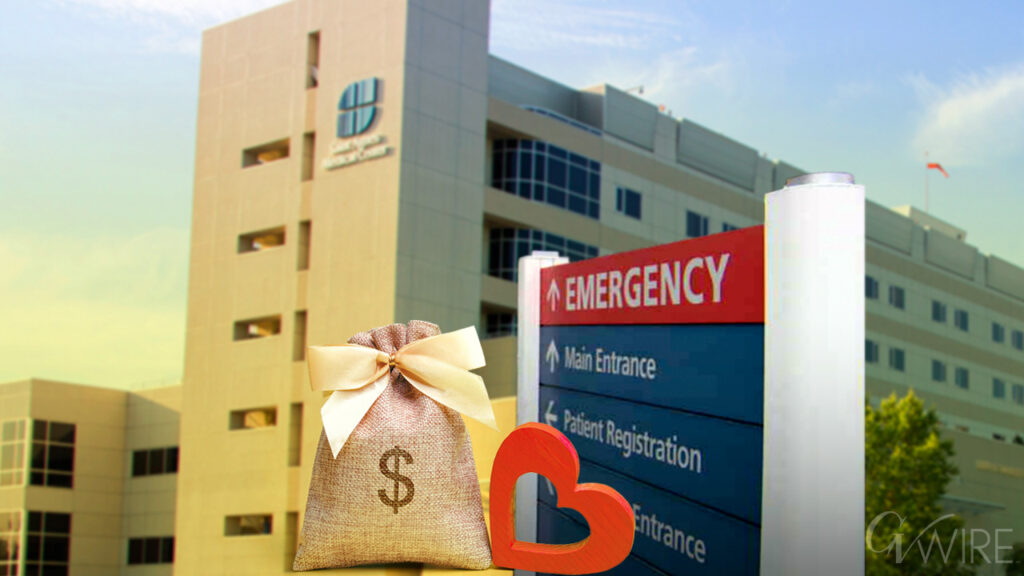In an undated image provided by Alexey Chizhik, an artist’s impression of a superflare on a sun-like star as seen in white light. New findings suggest that an extraordinarily powerful and dangerous burst of radiation might flare from our sun in the future. (Alexey Chizhik via The New York Times)

- Researchers study superflares, theorizing that our sun could produce such massive events, though none have been observed yet.
- A study in Science suggests stars like the sun generate superflares roughly once every century—far more often than previously thought.
- While superflares could pose significant threats to Earth’s electrical systems and space operations, astronomers emphasize the need for better monitoring and preparedness.
Share
|
Getting your Trinity Audio player ready...
|
Our sun is a violent place. Bursts of radiation snap off the solar surface with the strength of millions of volcanic eruptions. Hot plasma churns and spews, streaming particles that can harm astronauts and satellites in space and damage electrical systems on the ground. They can also brighten our skies with colorful lights.
But scientists have observed even bigger explosions with the power of a trillion hydrogen bombs from other stars that they call superflares. And although a superflare has yet to be observed from our own sun, astronomers wonder if it is capable of such an extremity, and if so, when one might occur.
A paper published in the journal Science on Thursday offers more insight. Researchers determined that stars similar to the sun generate superflares roughly once a century, a rate much higher than expected. The findings suggest that we could be due for an extraordinarily powerful solar event sooner rather than later.
“We are in the Space Age,” said Yuta Notsu, an astrophysicist at the University of Colorado Boulder and an author of the paper. “So I think it’s good to estimate low-probability but large-impact events,” which can help space weather experts better quantify any potential risk posed to our planet, he said.
Solar flares occur when the sun’s magnetic field twists and snaps, sending a burst of energy, often accompanied by an outflow of charged particles, into space. If these particles interact with Earth’s atmosphere, evidence of the event can end up nestled in tree rings or ice cores.
But particles aren’t always ejected, nor are those events always directed toward Earth, making it difficult for scientists to draw conclusions about the sun’s behavior from natural records. A better method, according to Valeriy Vasilyev, an astronomer at the Max Planck Institute for Solar System Research in Germany who led the study, is to look at stars in the Milky Way that behave like our own sun.
1 in 20 Sunlike Starts Produce a Superflare
Using data from NASA’s retired Kepler space telescope, Vasilyev’s team searched for stars with temperatures, sizes and brightness patterns similar to those of the sun. Out of 56,450 sunlike stars, they found that about 1 in 20 produced a superflare.
The rate at which a superflare occurred, approximately once every 100 years, is at least 30 times as great as in previous measurements — or higher.
“We were really surprised by this result,” Vasilyev said. “It’s a really huge difference.”
One reason this rate might be so much higher than expected is because the team used a higher resolution image analysis, which allowed them to match observed flares to their host stars with greater accuracy.
Scientists also have a better idea of what makes a star sunlike, particularly after a study in 2020 showed that our sun is not as active as once thought. That means superflare rates computed in the past may have been derived from a sample of stars not truly representative of the family the sun is a part of.
The latest measurements appear to better align with how often the sun flares at lower energies. Big or small, Vasilyev said, “it seems like the same physics is responsible for this kind of explosion.”
Hugh Hudson, an astronomer at the University of Glasgow in Scotland who was not involved in the work, applauded the team’s new method of matching flares with their host stars.
But he said he was not convinced by their conclusion that the superflare frequency was so much higher. For him, the question remains whether the stellar sample truly reflects the behavior of our sun, particularly in the way its brightness varies over time.
A dedicated space mission to observe the flares of sunlike stars, as well as a better understanding of the magnetic activity driving such events, would help provide an answer, he said.
In the future, the researchers plan to check their results against observations from other space telescopes, including NASA’s Transiting Exoplanet Survey Satellite and the European Space Agency’s Plato mission, which is planned to launch in 2026. They also hope to redo the analysis using X-rays and ultraviolet light, so as to compare their measurement across different wavelengths.
A solar superflare “is something that society needs to worry about,” Hudson said. “It could be exceedingly dangerous, in the sense of damage and resulting chaos.”
That is, of course, if the sun is even capable of unleashing a superflare at all.
Although we don’t know the answer to that question, “it’s nice to be prepared,” Vasilyev said.
—
This article originally appeared in The New York Times.
By Katrina Miller/Alexey Chizhik
c. 2024 The New York Times Company
RELATED TOPICS:
Categories

Trump Signs Order Aimed at Curbing State AI Laws


















